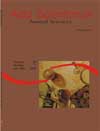Efeito das classes de peso sobre a composição corporal e o rendimento de processamento de matrinxã (<em>Brycon cephalus</em>)
Resumo
Matrinxã é um peixe originário da Bacia Amazônica que vem sendo cultivado na Região Sudeste, atendendo ao crescente mercado dos pesque-pague. Embora não exista um consenso sobre o peso de comercialização para essa espécie, ela tem sido realizada com exemplares acima de 600g. O objetivo deste trabalho foi avaliar o rendimento de processamento e a composição corporal do matrinxã em três classes de peso. Foram coletados em tanques de cultivo do Caunesp, Jaboticabal, SP, 45 exemplares, separados em três classes de peso: P1 = 400 a 500g; P2 = 501 a 600g e P3 = 601 a 700g, e submetidos ao processo de filetagem manual e determinação da composição corporal. Foram avaliados os seguintes parâmetros de rendimento (%): filé sem pele, vísceras, gordura visceral, carcaça sem cabeça, cabeça e resíduo total. Para a composição corporal foram determinados os teores de umidade, proteína bruta, lipídeos e cinzas. As classes de peso tiveram efeito (p < 0,05) para as porcentagens de vísceras (V), cabeça (C) e carcaça sem cabeça (Cs/C), porém para o rendimento de filé (F), gordura visceral (GV) e resíduo não ocorreram diferenças (p > 0,05). Os menores valores obtidos para carcaça sem cabeça e vísceras foram observados na classe P1 (75,94% e 8,38) e os maiores na P3 (78,05% e 9,48%). Destaca-se que a gordura visceral compreende em torno de 43% do total das vísceras em todas as classes de peso, havendo uma correlação positiva e significativa (r2 = 0,957*) entre esses dois parâmetros. A composição corporal apresentou diferenças significativas apenas quanto aos teores de cinzas, sendo que o maior valor foi observado nos peixes da maior classe de peso. Embora não significativo, nota-se uma tendência de maior acúmulo de gordura nos peixes maiores. Este alto teor de lipídeos observado com o matrinxã reflete uma característica comum em espécies de peixes tropicais de água doce. Com base nesses resultados, pode-se concluir que os teores de proteína bruta e lipídeos apresentam-se semelhantes nas três classes de peso avaliadas, e, sem prejuízo do rendimento de filé, os peixes podem ser processados com pesos menores aos normalmente comercializados.Downloads
DECLARAÇÃO DE ORIGINALIDADE E DIREITOS AUTORAIS
Declaro que o presente artigo é original, não tendo sido submetido à publicação em qualquer outro periódico nacional ou internacional, quer seja em parte ou em sua totalidade.
Os direitos autorais pertencem exclusivamente aos autores. Os direitos de licenciamento utilizados pelo periódico é a licença Creative Commons Attribution 4.0 (CC BY 4.0): são permitidos o compartilhamento (cópia e distribuição do material em qualqer meio ou formato) e adaptação (remix, transformação e criação de material a partir do conteúdo assim licenciado para quaisquer fins, inclusive comerciais.
Recomenda-se a leitura desse link para maiores informações sobre o tema: fornecimento de créditos e referências de forma correta, entre outros detalhes cruciais para uso adequado do material licenciado.








































